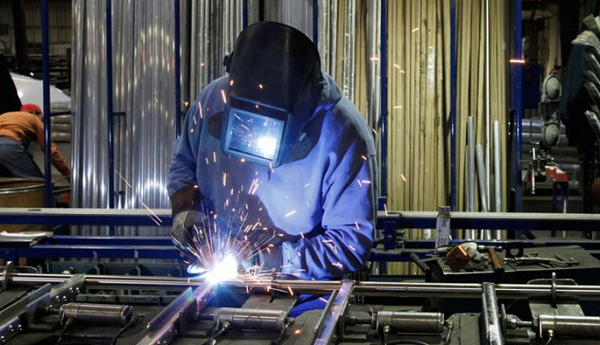
Manufacturing wobbles to 11-yr low
For more than a decade, Ghana's manufacturing businesses have been at the mercy of cheap imports, pricy loans and erratic power supply, resulting in contraction and collapse of some firms, loss of jobs and a consistent decline in the subsector's contribution to national output.
At 4.5
Although a reflection of structural adjustments in the national economy over the years, an Economist and Senior Research Fellow with the Institute for Fiscal Studies (IFS),
It also explains why the country is unable to achieve sustained development, also called prosperity in economics, he said on July 30.
Advertisement
“Studies have revealed that survival as an economy is not difficult. You can do anything that you want to survive but if you want prosperity –
“So, if a country like Ghana does not have enough oil resources that we can well manage to prosperity, then the only route is industrialisation and if we cannot
In 2014, the United Nations Children’s Fund (UNICEF) estimated that about 24.2
Historical trends
Beyond the constant shrink in the subsector’s contribution to GDP, its growth prospects have also dimmed in recent years.
Data analysed by the GRAPHIC BUSINESS showed that compared to annual growth rates of about 16 per cent in the Nkrumah era, yearly growth in manufacturing, which comprises textiles, agro-processing and pharmaceutical businesses, has averaged some 10 per cent between 1970 and 1980, a period characterised by political upheavals, and the early 1980s to 2000, when the Structural Adjustment Programme (SAP) ushered in economic liberalisation, divestiture of state enterprises and the promotion of a private sector-led economy.
Since then, manufacturing has been at the mercy of cheap imports as local industries struggle to compete with cheaply priced,
Data from the Ghana Statistical Service (GSS) show that after contracting by 1.2
Since then, growth in the subsector has been undulating, comprising two contractions in 2013 and 2014 and a 3.7
Costly loans
Until this year, when glimpses of macroeconomic stability spurred a moderation in interest rates, businesses were borrowing at an average of 30
Even at the current rate of about f 25
“If we are still borrowing beyond 25
Beyond the cost,
Role of imports
As the fortunes of manufacturing businesses continue to decline in recent times, imports have remained strong, raising fears that Ghanaians were encouraging growth in the manufacturing sectors of foreign countries.
“Manufacturing is a very sensitive sector; it is not like agriculture where peasant farmers can survive. For infant industries in manufacturing, the conditions have to be right before they can succeed.
“But now that there is free trade, which I do not object to, how can our infant industries compete with the advanced ones from Japan, America
“It is like making a child who is still learning how to walk to compete with Usain Bolt in a
Way forward
Like many,
He mentioned fiscal incentives, trade restrictions,
As a result, he said a strong
“There is no sort of protection against that level of flooding of our market, which sometimes we do not need,” he said.
In April this year, the government established the Ghana International Trade Commission meant to create a level playing field for local manufacturers and their foreign counterparts. — GB

